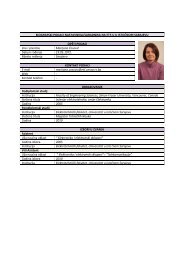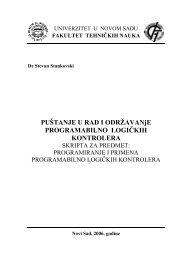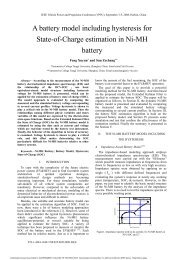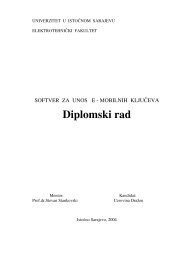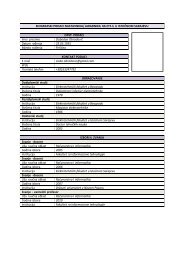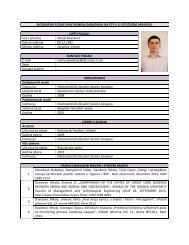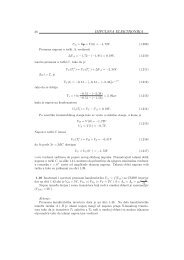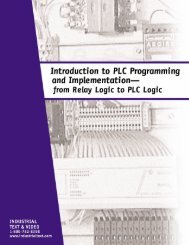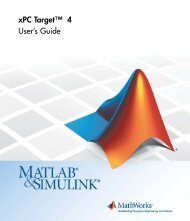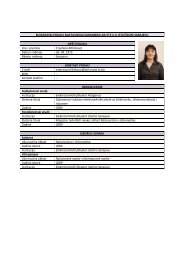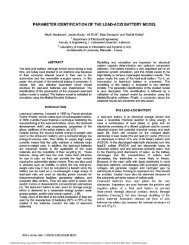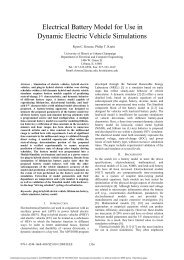Accurate Electrical Battery Model Capable of Predicting Runtime ...
Accurate Electrical Battery Model Capable of Predicting Runtime ...
Accurate Electrical Battery Model Capable of Predicting Runtime ...
You also want an ePaper? Increase the reach of your titles
YUMPU automatically turns print PDFs into web optimized ePapers that Google loves.
CHEN AND RINCÓN-MORA: BATTERY MODEL CAPABLE OF PREDICTING RUNTIME AND I–V PERFORMANCE 509<br />
TABLE II<br />
MODEL EXTRACTION ACCURACY (POLYMER LI-ION BATTERY)<br />
Fig. 8. Comparison between simulation results and experimental data for<br />
(a) 80-, (b) 320-, and (c) 640-mA pulse discharge currents for the polymer<br />
Li-ion battery.<br />
discharge current, and Fig. 8 shows the simulation results and<br />
experimental data <strong>of</strong> 80-, 320-, and 640-mA discharge currents.<br />
The proposed model regenerates voltage response less than<br />
21-mV error and runtime less than 0.12% error <strong>of</strong> polymer<br />
Li-ion batteries accurately. The close agreement manifests the<br />
accuracy <strong>of</strong> the parameter extraction.<br />
VI. MODEL VALIDATION<br />
To validate the extracted model <strong>of</strong> the polymer Li-ion battery,<br />
three different load pr<strong>of</strong>iles, i.e., continuous, pulse, and periodic<br />
four-step discharges, were applied to the polymer Li-ion<br />
battery. The first case is to discharge the polymer Li-ion battery<br />
with an 80-mA continuous current. The simulation results<br />
Fig. 9. Comparison between simulation results and experimental data for<br />
(a) 80-mA continuous, (b) 80-mA pulse, and (c) periodic four-step discharges<br />
for the polymer Li-ion battery.<br />
against experimental data are shown in Fig. 9(a), and they have<br />
15-mV maximum error voltage and 0.395% runtime error. The<br />
second case is to pulse charge the polymer Li-ion battery with<br />
constant current and then constant voltage (80 mA and 4.1 V).<br />
As shown in Fig. 9(b), simulation results match experimental<br />
data well, except during the transition period from constant current<br />
to constant voltage. The cause <strong>of</strong> the discrepancy is that<br />
the polymer Li-ion battery charge circuit modeled in the Cadence<br />
environment has slightly different characteristics with<br />
that implemented in the PCB prototype. The last case is to<br />
discharge the polymer Li-ion battery with a periodic four-step<br />
(0-, 400-, 160-, and 640-mA currents) load pr<strong>of</strong>ile shown in<br />
Fig. 9(c). Similarly, a good match between simulation results and<br />
experimental data, 20-mV maximum error voltage and 0.338%<br />
Authorized licensed use limited to: GOVERNMENT COLLEGE OF TECHNOLOGY. Downloaded on December 31, 2009 at 04:50 from IEEE Xplore. Restrictions apply.



